Sim Lab Earns INACSL Endorsement
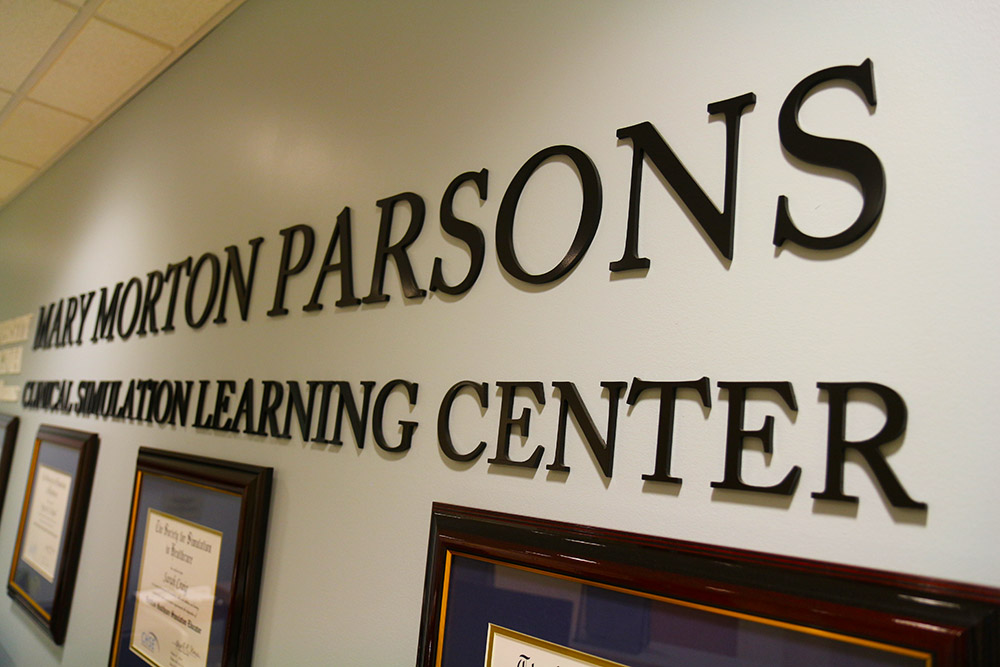
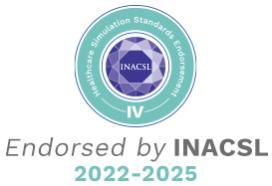 The School's 13,100-square-foot Mary Morton Parsons Clinical Simulation Learning Center was one of just 14 sim labs from across the country to earn an endorsement from the International Nursing Association for Clinical Simulation and Learning for excellence in applying the four core standards of simulation, which include pre-briefing, debriefing, facilitation, and professional integrity.
The School's 13,100-square-foot Mary Morton Parsons Clinical Simulation Learning Center was one of just 14 sim labs from across the country to earn an endorsement from the International Nursing Association for Clinical Simulation and Learning for excellence in applying the four core standards of simulation, which include pre-briefing, debriefing, facilitation, and professional integrity.
The honor, said sim lab director and assistant professor Ryne Ackard, is a testament to the skill, creativity, and commitment to excellence of simulation faculty and staff.
"While simulation was once thought of as 'see-then-practice,' today's professional academia recognizes the deeper level of conceptual and practical understanding that simulation enables," said Ackard, who directs the UVA Healthcare Simulation Collaborative between the Schools of Nursing and Medicine while also taking a hands-on, day-to-day approach with nursing students and faculty in the McLeod Hall sim lab. "Our small but mighty team is committed to ensuring students take part in the most interesting, most robust, evidence-based scenarios possible in our lab. We're proud of this endorsement, and of the work we do."
"Ryne and his team’s consistent creative approach to simulation has really upped UVA’s clinical game in a moment when nursing and medical schools increasingly rely on simulation to ready a generation of care professionals for the realities of today’s clinical environments.”
Marianne Baernholdt, Sadie Heath Cabaniss Professor and Dean, UVA School of Nursing
Simulations are a growing part of both undergraduate and graduate nursing students' experiences. Thanks to a $2.035 million capital expansion project (part of Joanne and Bill Conway's record-setting $20 million gift to the School in 2020) that enabled the lab's capacity to grow by more than 82% (from 7,200 square feet to more than 13,100 square feet), today's sim lab boasts three times its previous student capacity with three new medical/surgical simulation rooms, debriefing rooms, and EPIC stations.
Its high-tech spaces also include all the bells and whistles of a typical hospital room, a phalanx of more than one dozen programmable mannequins, including several premature infants and several adults, a wearable birthing simulator, and several infection control spaces where students practice safety procedures. More than 35 cameras throughout the lab assess students' skills for collective review by their professors and peers during post-simulation briefings.
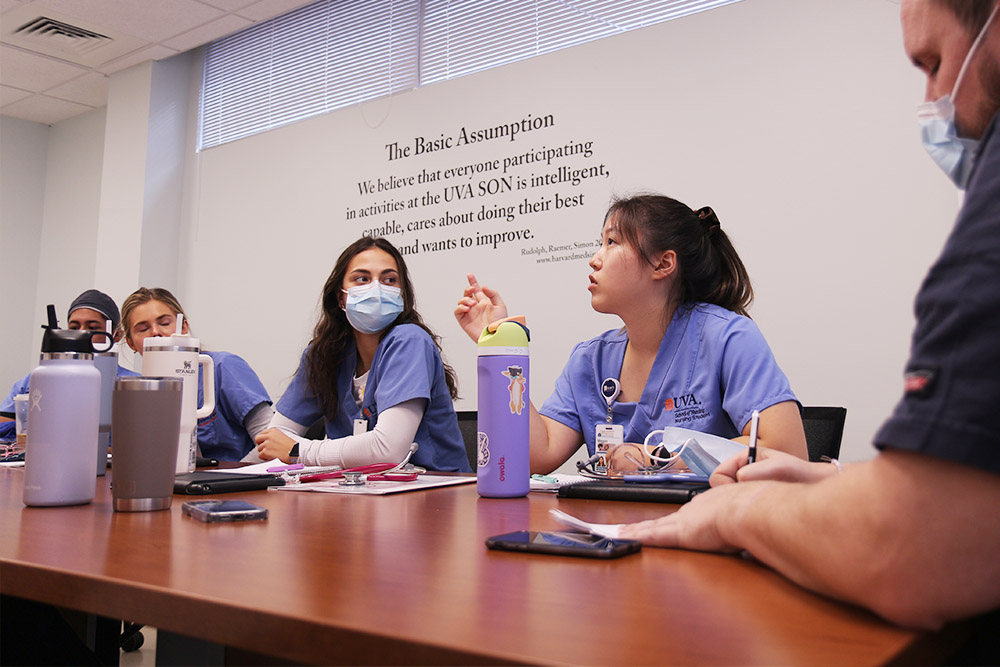
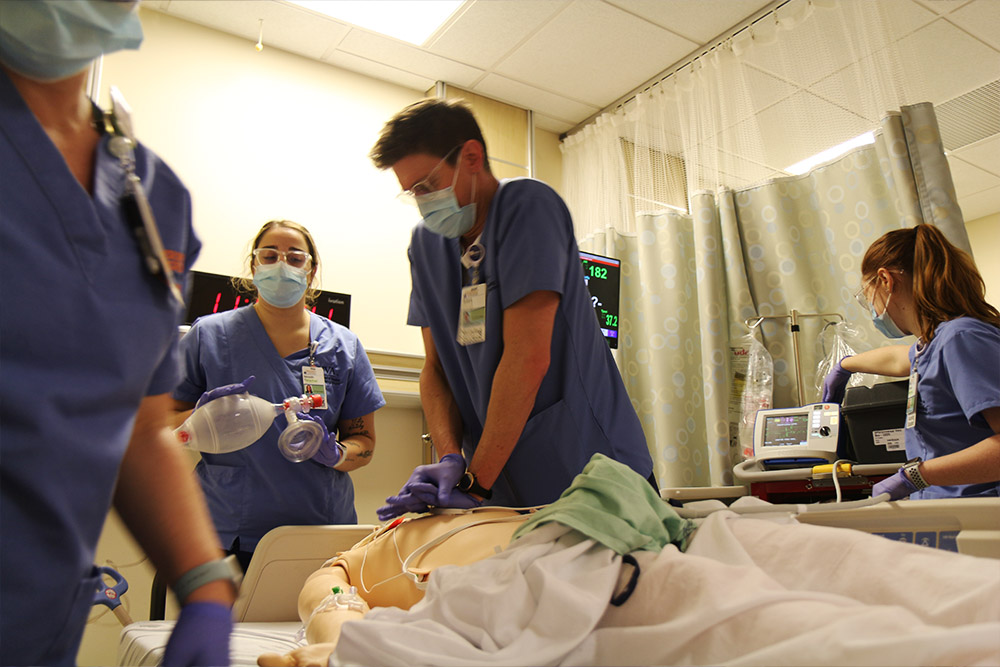
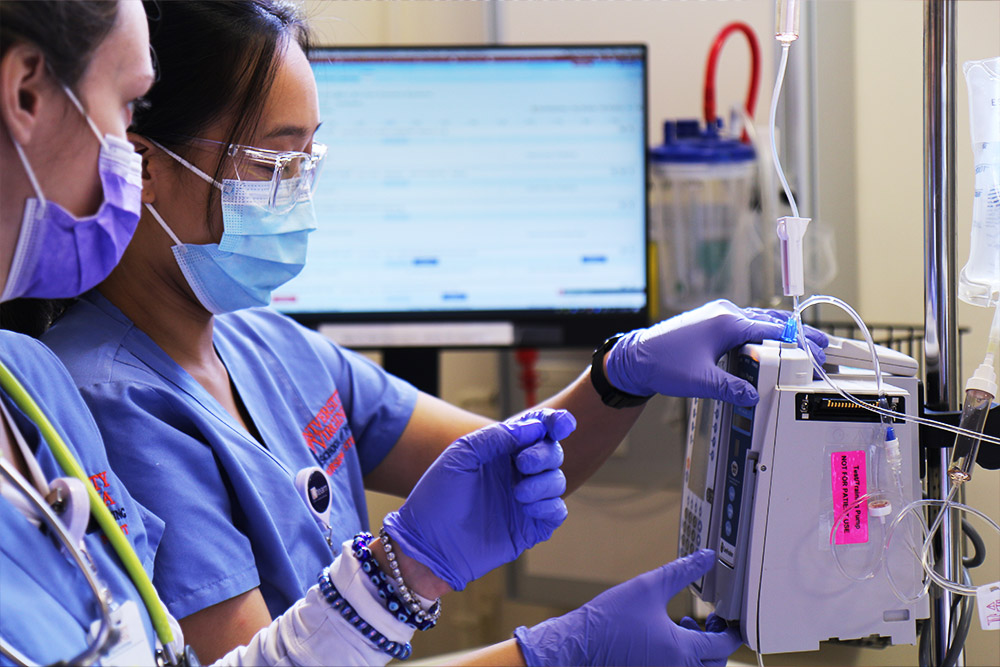
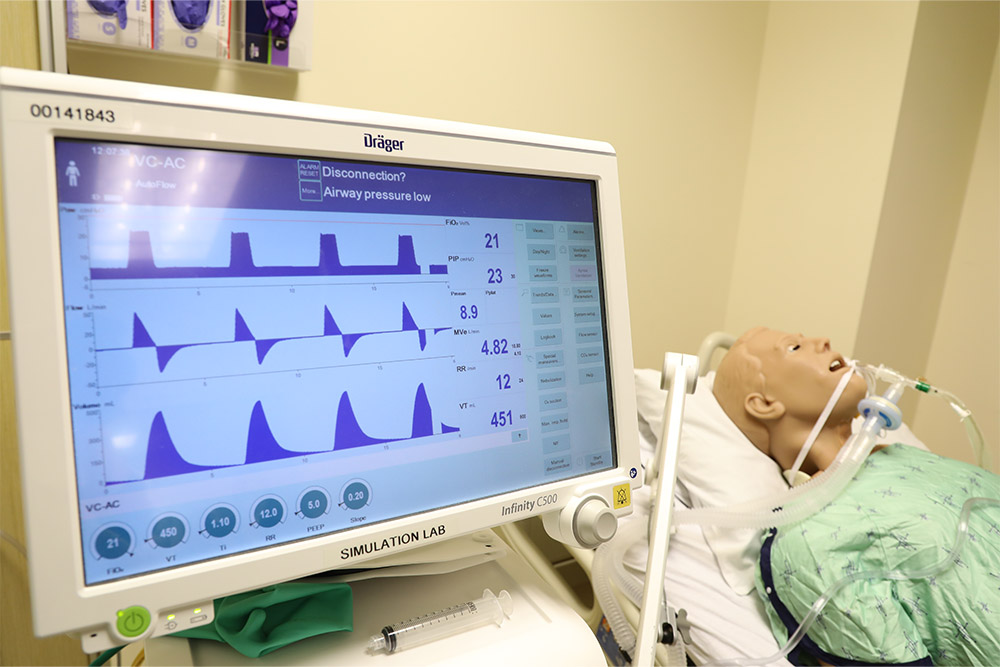
With bedside mentors at a premium, particularly since COVID-19, simulation practice ensures that students will be ready for the opportunities and challenges of caring for real patients during their clinical rotations. In fact, a landmark national study found that nursing students who earned half their clinical experiences through quality scenarios were equally prepared for entry into practice, with no discernable difference in knowledge assessment, NCLEX board pass rates, or manager ratings, within graduates' first six months of work.*
One-quarter of pre-licensure students' clinical hours may take place in a simulation lab, per Virginia Board of Nursing regulations. With the lab's expansion, UVA nursing students have been able to increase their hours in the lab by 15 percent.
“We rely on our sim lab to provide students with rich, meaningful, applicable clinical experiences that prepare them to think on their feet when transitioning to care for real patients and across real scenarios,” said Marianne Baernholdt, dean of UVA School of Nursing. “While that’s always been the case, Ryne and his team’s consistent creative approach to simulation has really upped UVA’s clinical game in a moment when nursing and medical schools increasingly rely on simulation to ready a generation of care professionals for the realities of today’s clinical environments.”
The INACSL's Healthcare Simulation Standards guide the integration, use, and advancement of simulation-based experiences within academia, clinical practice, and research. Its endorsement publicly recognizes institutions that excel in creating simulation experiences that enhance learning, promote professional development, and advance the science of simulation.
###
* Hayden, J., Smiley, R., Alexander, M., Kardong-Edgren, S., & Jeffries, P. (2014). The NCSBC National Simulation Study: A longitudinal, randomized, controlled study replacing clinical hours with simulation in prelicensure nursing education. The Journal of Nursing Regulation, 5(2), S4-S41.
